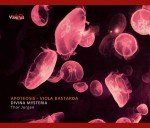The study of Baroque music is based upon an analytic endeavor which leads to a musical interpretation through criteria which are born in reflection on a musical text and its setting. But this study is also product of a consideration of the coexistence and restructuring of these criteria in accord with our contemporary circumstances, revealing to us the vibrancy of this system of musical esthetics and its eternal regenerative capacity. All of this implies a search for and study of these sources which are both responsible and respectful. One must also carry out this deconstructive exercise about the context of these works with the clear knowledge that one is rereading each source from the perspective of one’s contemporary and immediate cosmovision, and, as a result, endowing it with a new meaning.
There is no way to struggle against the passing of time nor to reconstruct it with any kind of accuracy. What we can do is to carry out an exercise in intertextuality and reinvention today in which we can give new life to a work, to a concept and an expressive style of a composite imaginary from centuries past. Following along these parameters we can begin to undertake the analysis of the evolution of a special aspect of the history of the violin. More specifically we can focus our attention upon a period of no more than 50 years of this history: taking place precisely between the sixteeth and seventeeth centuries in the country now known as Italy. We are here referring to the viola bastarda and its style of composition and interpretation which has been named alla bastarda.

